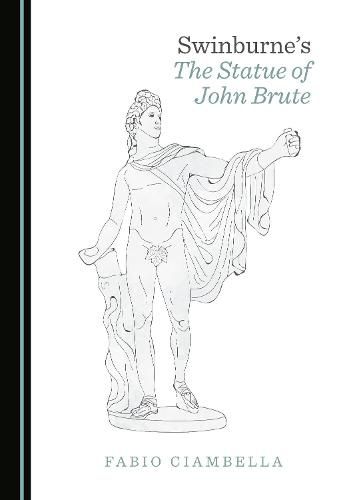Readings Newsletter
Become a Readings Member to make your shopping experience even easier.
Sign in or sign up for free!
You’re not far away from qualifying for FREE standard shipping within Australia
You’ve qualified for FREE standard shipping within Australia
The cart is loading…






Wrongly believed to be a parodic divertissement by the nineteenth-century English poet Algernon Charles Swinburne, The Statue of John Brute reveals itself as a highly interesting intertextual universe where echoes from Shakespeare, the Restauration drama, Beckford, Gothic fiction, and many other sources of inspiration mix together in an extremely short but explosive text.At the heart of this volume is an absolutely original analysis of this relatively unknown text, meant to acknowledge its paramount importance as Oscar Wilde’s source for his well-known The Picture of Dorian Gray. While trying to confute the hypotheses put forward by critics from the 1920s and 1930s who believed The Statue to be a fin-de-siecle parody of Wilde’s Aesthetic masterpiece, this study anticipates its date of composition by almost twenty years - through an accurate bio-literary and corpus-stylistic analysis - thus recognising it not as a parody, but as a possible hypotext of Dorian Gray.
$9.00 standard shipping within Australia
FREE standard shipping within Australia for orders over $100.00
Express & International shipping calculated at checkout
Wrongly believed to be a parodic divertissement by the nineteenth-century English poet Algernon Charles Swinburne, The Statue of John Brute reveals itself as a highly interesting intertextual universe where echoes from Shakespeare, the Restauration drama, Beckford, Gothic fiction, and many other sources of inspiration mix together in an extremely short but explosive text.At the heart of this volume is an absolutely original analysis of this relatively unknown text, meant to acknowledge its paramount importance as Oscar Wilde’s source for his well-known The Picture of Dorian Gray. While trying to confute the hypotheses put forward by critics from the 1920s and 1930s who believed The Statue to be a fin-de-siecle parody of Wilde’s Aesthetic masterpiece, this study anticipates its date of composition by almost twenty years - through an accurate bio-literary and corpus-stylistic analysis - thus recognising it not as a parody, but as a possible hypotext of Dorian Gray.